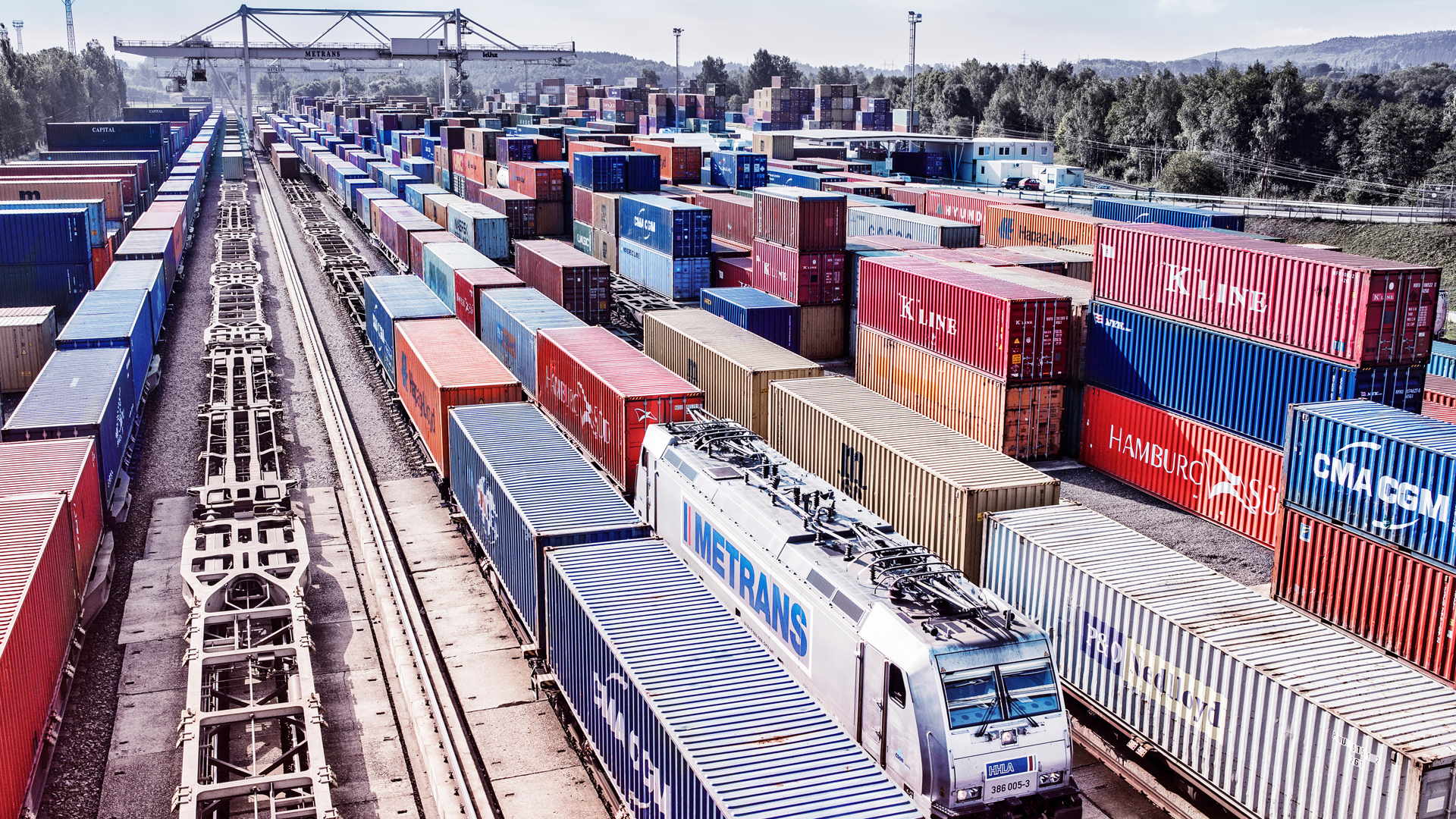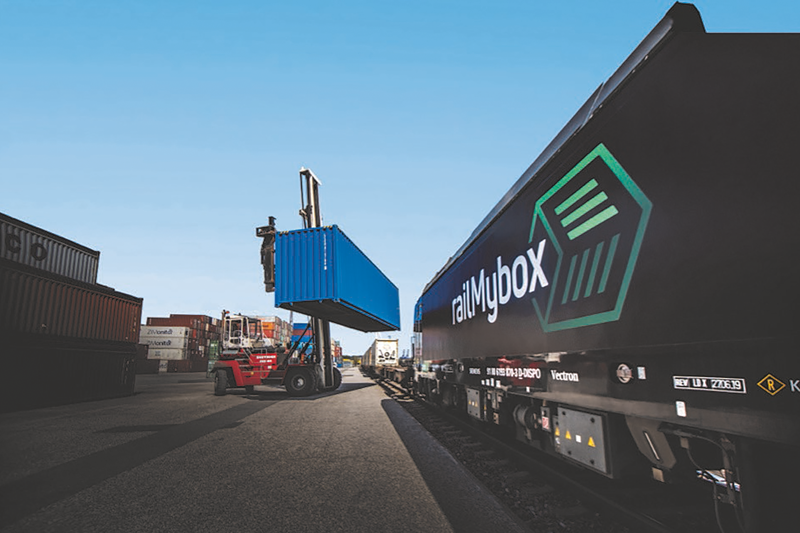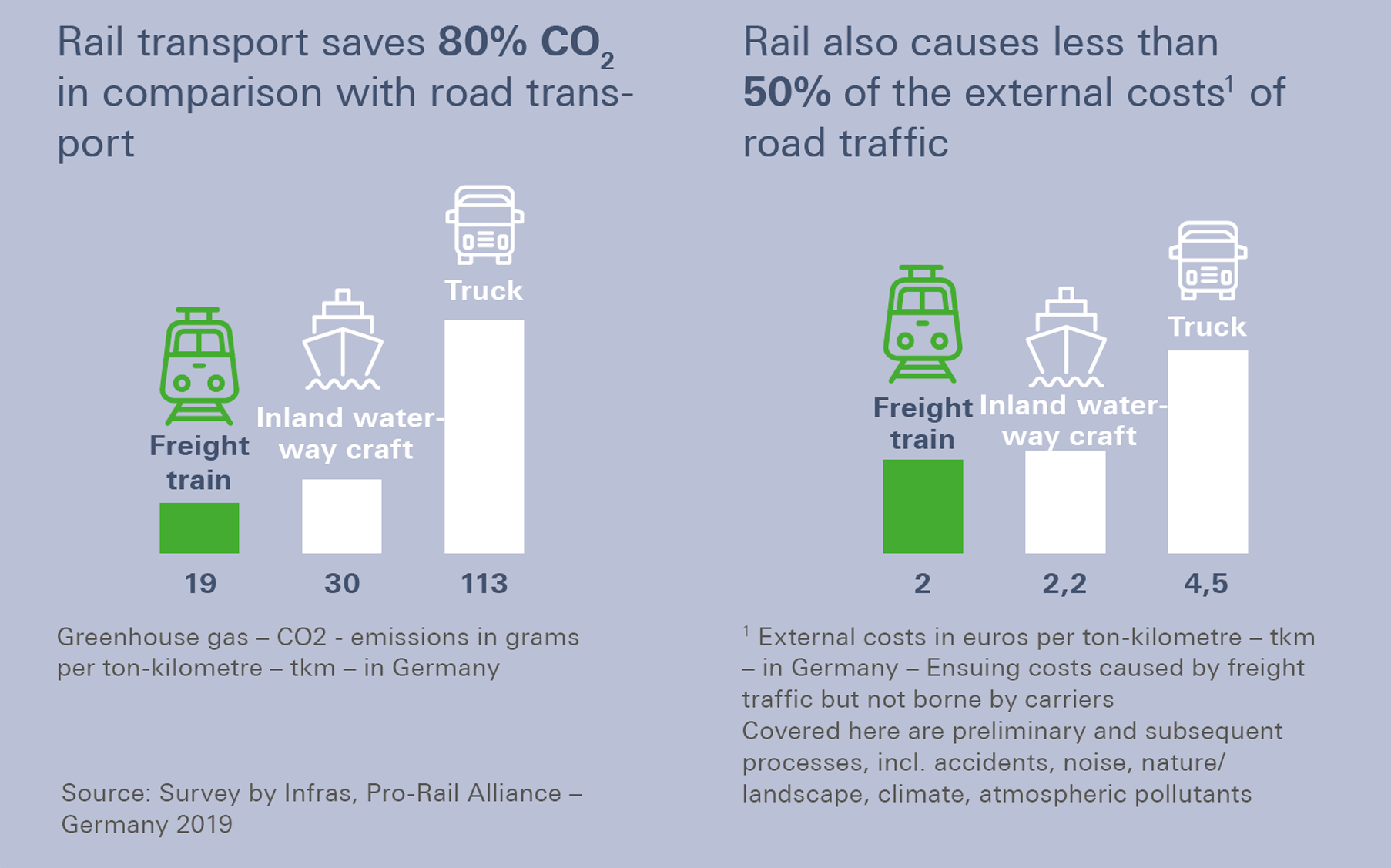No more plastic waste on board
CMA CGM group has moreover decided to be climate-neutral by 2050.

Rail is the most environment-friendly carrier by a wide margin. Per ton and kilometre transported, rail produces only about one-quarter of a truck’s CO2. Railfreight services accordingly play a key role in achieving climate goals. Offering more and more products involving green power, many rail operators are convinced of this.
The latest example shows that shipping lines too are reacting. For instance, the Japanese shipping company ONE just recently expanded its hinterland range. This now offers shipments for Basle or Dortmund from Hamburg or Bremerhaven. The line has opted for TFG Transfracht as partner. Striving for ‘Green Logistics’, it primarily offers the main run by rail. Compared to truck transport, this cuts out around 80 percent of CO2 emissions. Under the product name TFGeco, with its trains TFG completely covers the power requirement for rail transport with renewable energies. The company aims to contribute towards sustainable environment protection with this. With TFGeco train and TFGeco truck, TFG Transfracht sees itself as well positioned for climate-friendly shipments on intermodal services.
Metrans is pursuing a similar course. This HHLA rail subsidiary has also started to switch to green power. In parallel, Metrans with its ‘HHLA Pure’ fully compensates for container emissions of containers to be transported on these services. Last year, that involved 912,000 TEU – standard containers – for destinations to and from Hamburg, Bremerhaven and Koper, for which more than 45,000 tons of CO2 were offset by climate protection measures to the certified gold standard. For the ‘last mile’, the company has taken Hungary’s first electric truck into service in Budapest. Wherever overhead power lines are lacking, for years now, hybrid locomotives have been deployed for shunting. These steps by Metrans are part of the entire HHLA Group’s drive for climate-neutral operation by 2040.
TX Logistik is also going for eco-power. In Germany, the company claims to be operating 100 percent with certified green power. Two-thirds of this is gained from hydro-electric power. Equal parts of the remainder are derived from wind and solar energy. Neither climate-harmful CO2 nor radioactive waste occur in generating this. To keep energy consumption as low as possible for shipments, FS Italiene’s Mercitalia uses solely state-of-the-art locomotives. The drive units themselves generate power by recovering part of the energy freed during braking and converting this into electricity. In recent years, the proportion of energy recovered by TX Logistik has risen continuously, now standing at around 16 percent.
Similarly, rail is of constantly growing interest for shippers. Demand for ecological/sustainable shipments among forwarders and shippers in trade and industry is rising correspondingly. In launching its wholly- owned subsidiary Boxx Intermodal Logistics, Warsteiner Group is pursuing a new course, now opening up its intermodal services to external customers too. “Our focus is on boosting ecological/sustainable shipments and making services for our customers more professional. It is important that what we offer is not confined to the drinks sector, but applies to all freight that can be containerized,” explains Daniel Küster, Manager Supply Chain Management at Warsteiner Brewery and CEO of Boxx Intermodal Logistics. ‘Door-2-Door’ delivery using an intermodal transport chain offers external clients too an all-round service with highly reliable delivery and supply. Railborne freight transport is an ecologically more sustainable alternative to road transport. In cooperation with WLE – Westphalian State Railway – via its own private siding Warsteiner Brewery serves Munich, Verona and Hamburg as destinations for block trains. In direct cooperation with the Port of Hamburg, Warsteiner ships its products all over the world via Hamburg.

Intermodal transport is attracting ever-growing attention among shippers, shipping lines, logistics providers and forwarders. The advantage of them is that, whether accompanied or unaccompanied, in the main only the pre- and post-carriage sections are done by truck. The long one is done by rail. Where this is a good fit, part of the route can be covered by ferry. This leads to a considerably lower volume of emissions compared to purely road transport. To enable users to find their connections more easily, digital platforms have been set up. railMybox only started in May. With a two-stage process for minimizing CO2 emissions, this Cloud-based
all-in-one platform can satisfy the demand for sustainable container shipments. Climate-neutral rail services using 100 percent green power can be coupled with last-mile transport by partner companies operating sustainable trucks. Against a fee, CO2 drops to nil, fully compensating for all emissions. Not the least impressive factor that companies find persuasive is that a freight train over 700 metres’ long replaces at least 52 trucks on overloaded roads.
Modility has gathered somewhat more experience. This digital platform was able to celebrate its first anniversary in March. According to Modility, more than 200 companies had registered by then. Enquirers such as forwarders or shipping companies have a network choice of around 370 maritime hinterland, along with continental, services. This currently covers 80 terminals in 15 European countries.
The Fraunhofer research institute also just recently presented the idea of a web-based data and interchange platform for intermodal transport. A platform should enable individual shippers to pursue a direct exchange with the players involved in freight transport and handling. This could facilitate pooling, based on timing and requirements, of the shipments of several shippers, a reduction of costs through direct loading at regional intermodal terminals and an improved environmental score thanks to the generally higher rail share.
